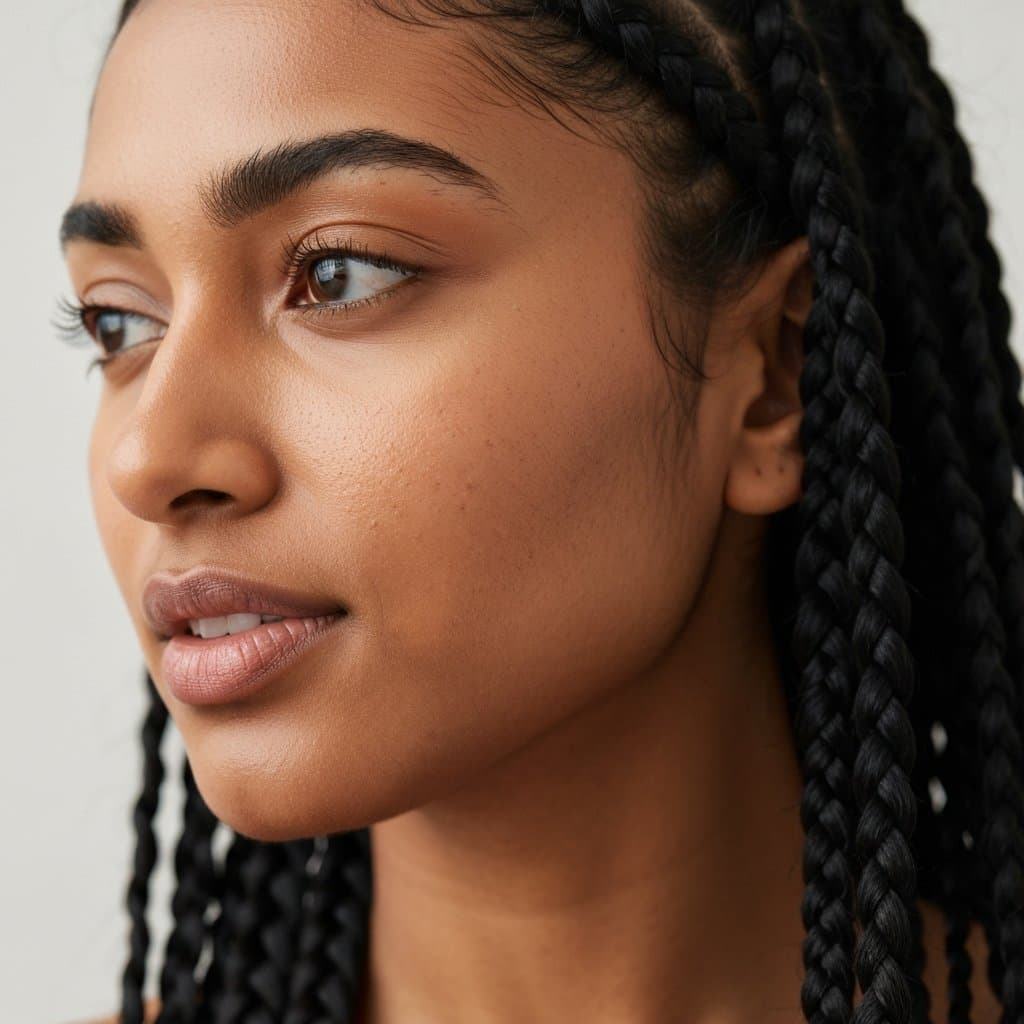Knotless Braids: The Ultimate Guide to a Stylish & Scalp-Friendly Protective Style
The Evolution of Braids: Why Everyone is Choosing Knotless
Protective styling has long been a cornerstone of healthy hair care, offering a much-needed break from daily manipulation, heat, and environmental stressors. Among the pantheon of braided styles, one technique has risen to prominence, capturing the attention of stylists and clients alike for its unique blend of beauty, comfort, and health benefits: knotless braids. This innovative method is more than just a fleeting trend; it represents a significant evolution in braiding, prioritizing the health of your scalp and hair follicles without sacrificing an ounce of style. If you've ever winced from the initial tightness of traditional braids or worried about tension on your edges, the knotless technique is the game-changing answer you've been seeking.
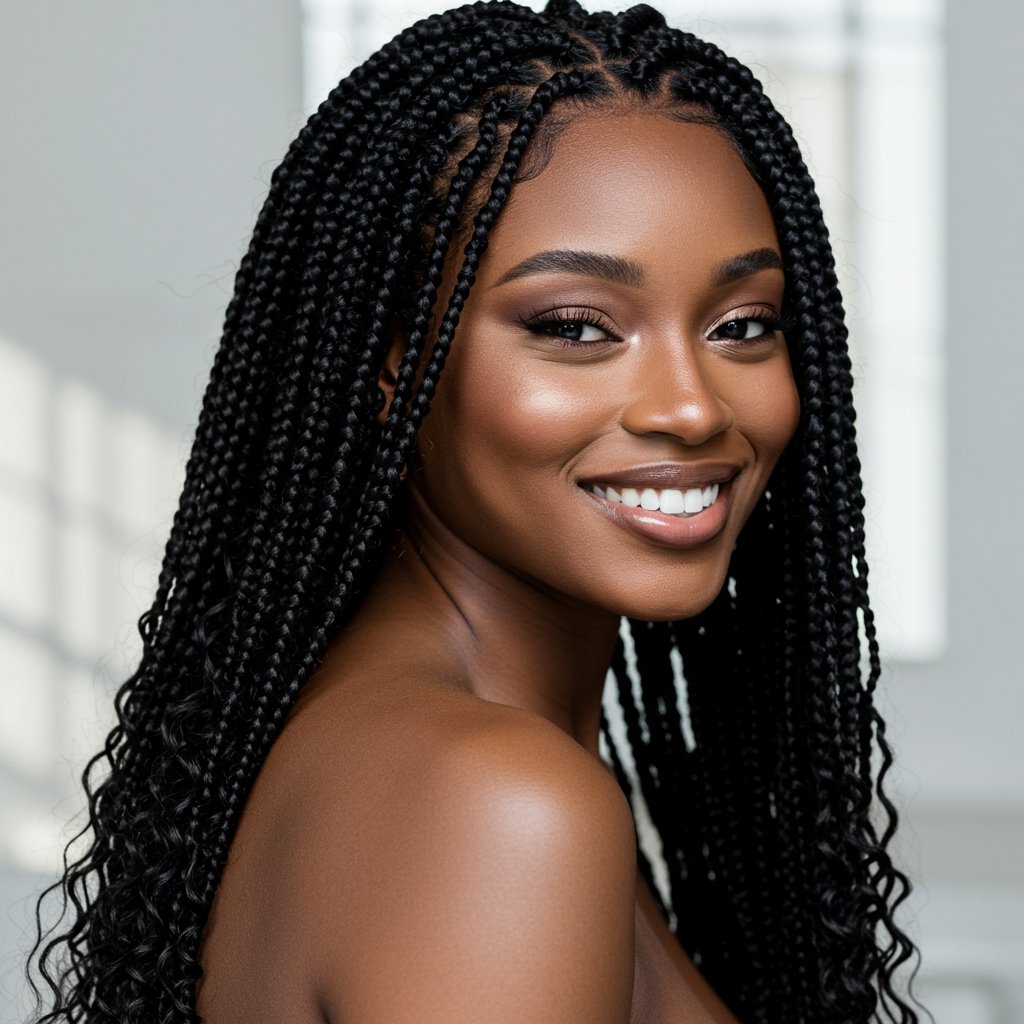
Unlike their traditional counterparts, which begin with a small, tight knot anchored to the scalp, knotless braids start with your natural hair and gradually feed in braiding extensions. This seemingly small change has a monumental impact. It eliminates the primary source of tension, pain, and potential follicle damage associated with braided styles. The result is a lighter, more flexible, and incredibly natural-looking finish that lays flat from the root. This guide will delve deep into the world of knotless braids, exploring why this protective style is not just a choice for aesthetics, but a conscious decision for the long-term health and vitality of your hair and scalp.
What Exactly Are Knotless Braids? Unpacking the Technique
To truly appreciate the benefits of knotless braids, it's essential to understand the fundamental difference in their application. The name itself provides the biggest clue: there is no knot at the base. Traditional box braids are created by looping a bundle of extension hair around a section of natural hair at the root and securing it with a tight knot before braiding down. This knot, while effective for anchoring the extension, is the main culprit behind the pulling, tension, and initial stiffness that many people experience.
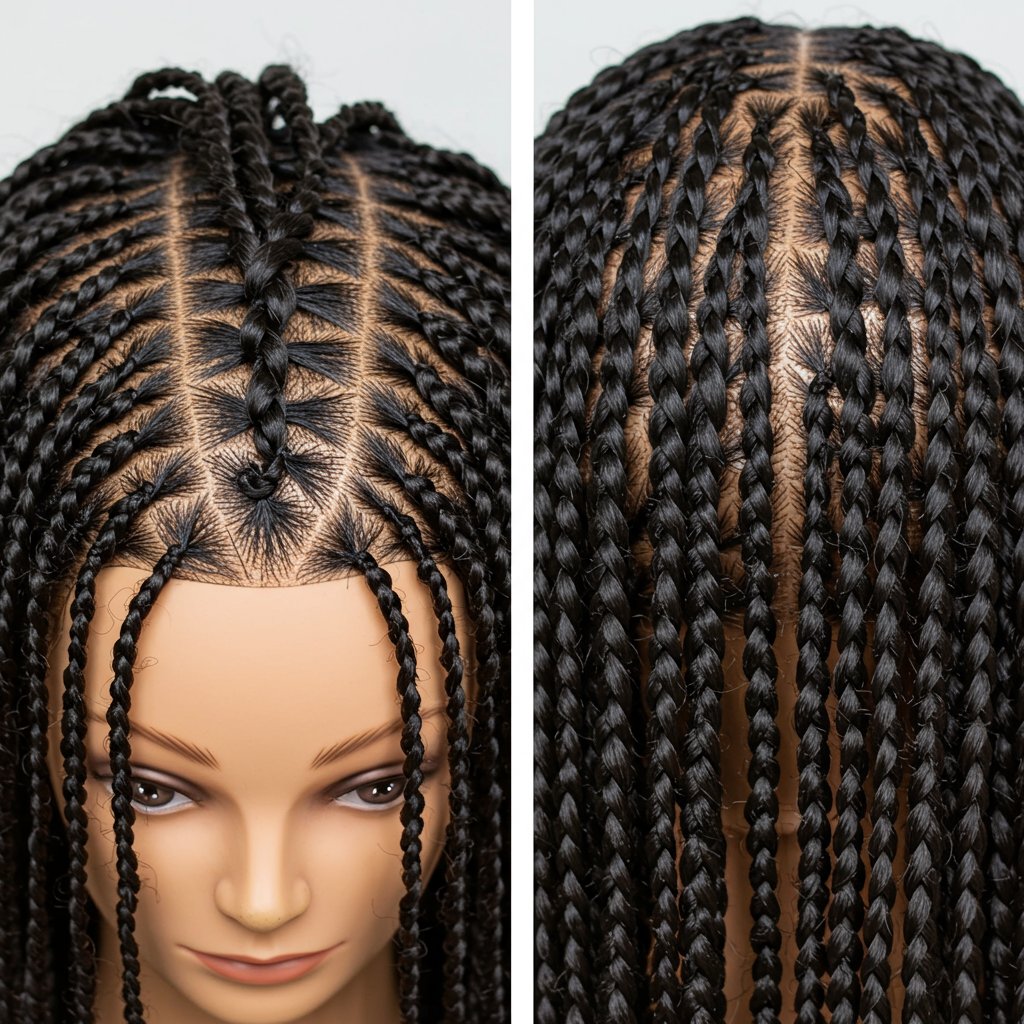
The Revolutionary Feed-In Method
Knotless braids, however, utilize a sophisticated technique known as the "feed-in" method. The process begins by sectioning the hair just like any other braid, but the stylist starts braiding with only your natural hair. After a few passes, small pieces of braiding hair are incrementally and seamlessly added into the braid. This gradual addition continues down the length of the braid until the desired thickness and length are achieved. This method ensures that the weight of the extension is distributed evenly along the hair shaft, rather than being concentrated at the root.
A Seamless Transition from Scalp to Braid
The visual and physical result is a braid that appears to grow directly from the scalp. It lies flat, moves freely, and lacks the bulky, raised base of a traditional box braid. This seamless transition is not only more aesthetically pleasing and natural-looking, but it's also the key to the style's unparalleled comfort. By eliminating the anchor knot, the feed-in technique creates a truly tension-free protective style that your scalp will thank you for.
The Scalp Health Revolution: Why Knotless is King for Hair Care
The primary reason for the meteoric rise in popularity of knotless braids is their profound benefit for scalp health. While the goal of any protective style is to shield hair from damage, some methods can inadvertently cause their own set of problems, most notably traction alopecia. Knotless braids directly address these concerns, making them one of the safest and most beneficial braided options available.
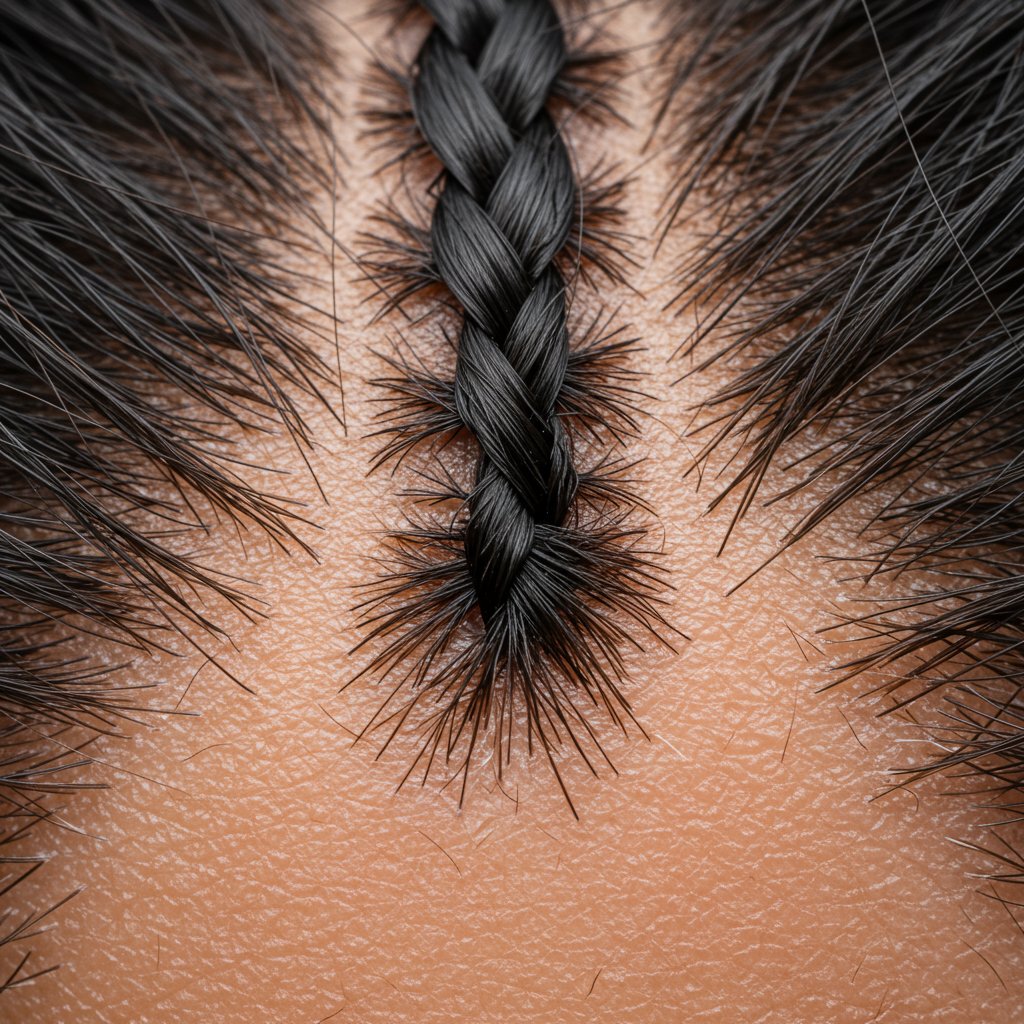
Reduced Tension and Follicle Stress
The constant, firm pull from the anchor knot in traditional braids can place immense stress on hair follicles. This tension can lead to inflammation, breakage, and in severe or prolonged cases, traction alopecia—a form of hair loss caused by repetitive pulling on the hair. Knotless braids completely mitigate this risk. By starting the braid with your natural hair and feeding in extensions gradually, the tension is dispersed. There is no single point of stress on the follicle, allowing your scalp to remain relaxed and healthy throughout the duration of the style. This makes them an excellent choice for those with sensitive scalps or finer hair textures that are more susceptible to tension-induced damage.
Lightweight and Comfortable from Day One
Anyone who has had traditional box braids knows the first few days can be uncomfortable. The tightness can make it difficult to sleep, style your hair in an updo, and may even cause headaches. Knotless braids offer immediate comfort and flexibility. Because they lay flat and don't pull at the root, you can style them in a high ponytail or a bun on the very same day of your appointment without any pain or pulling. The overall weight is also distributed more evenly, making the style feel significantly lighter and more manageable, especially for those opting for longer or thicker braids.
The Aesthetic Appeal: Versatility and a Natural Look
Beyond the health benefits, knotless braids deliver a stunning and versatile aesthetic that is both modern and timeless. Their unique application results in a flawlessly natural look that is difficult to achieve with other braiding methods. This refined appearance, combined with incredible styling flexibility, makes them a top choice for any occasion.
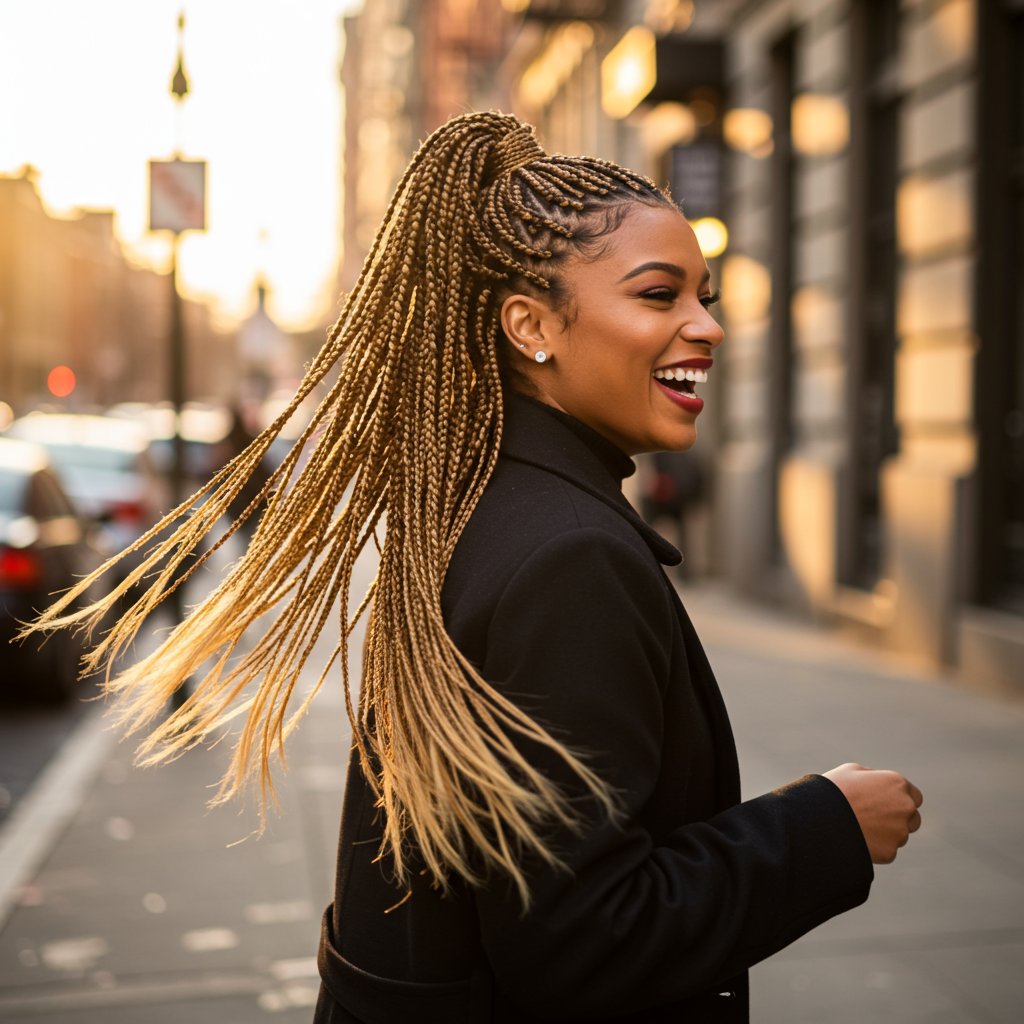
A Seamless, Flatter Appearance
The most striking visual feature of knotless braids is how they lay. Without the bulky knot at the base, the braids lie flush against the scalp, creating a smooth, sleek silhouette. This not only looks more natural but also allows for a more uniform and clean parting grid. The braids flow seamlessly from the root, giving the illusion that they are your own hair. This subtle yet significant detail elevates the entire look, providing a more polished and sophisticated finish.
Styling Flexibility from the Moment You Leave the Salon
The immediate flexibility of knotless braids is a major selling point. The lack of tension means you don't have to wait for the braids to "loosen up" before you can style them. From elegant high buns and chic ponytails to half-up styles, you have full range of motion from day one. This makes them incredibly practical for active lifestyles, professional settings, and special events. You can switch up your look effortlessly without causing any discomfort or stress to your scalp.
Endless Customization: From Boho to Goddess
Knotless braids serve as a perfect canvas for personalization. They can be installed in various sizes, from micro to jumbo, and lengths, from a chic bob to dramatic floor-length tresses. The style is also beautifully adaptable to popular variations like "boho" or "goddess" braids, where strands of curly or wavy hair are left out for a softer, more romantic texture. You can also play with color, seamlessly blending in shades for a subtle highlight, a bold ombré, or a full-on fantasy color look.
The Knotless Braiding Process: What to Expect During Your Appointment
Understanding the process of getting knotless braids can help you prepare for your salon visit and appreciate the artistry involved. While the end result is effortless, the technique requires skill, precision, and patience from a professional stylist. Generally, a knotless braid installation takes longer than traditional box braids due to the meticulous feed-in method.
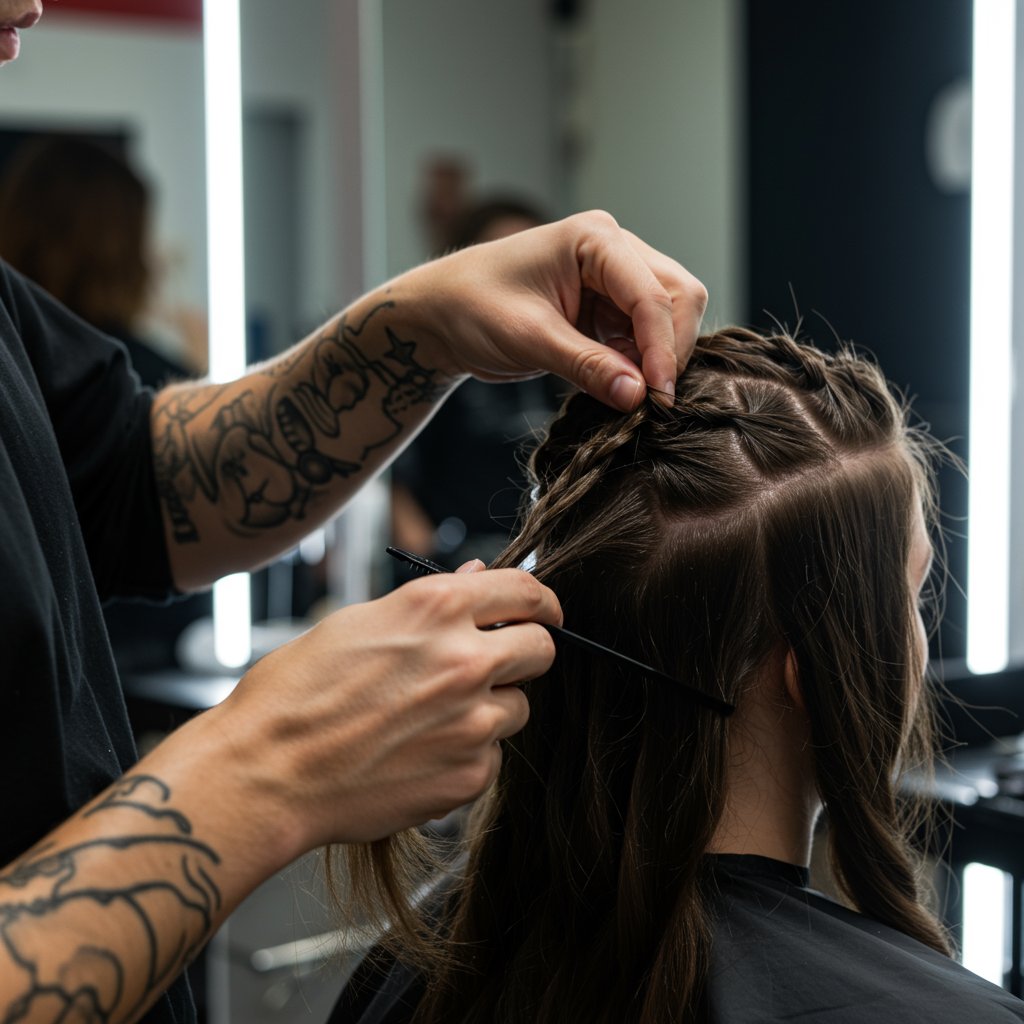
Preparation is Key
Arriving at your appointment with properly prepared hair is crucial for the best results. Your hair should be freshly washed, detangled, and thoroughly stretched, usually via a blow-dry on low to medium heat. A clean and well-moisturized scalp provides the perfect foundation for the braids and helps ensure the longevity of the style. Some stylists may apply a light leave-in conditioner or heat protectant before blow-drying to protect the hair strands.
The Feed-In Technique in Action
Once your hair is prepped, the stylist will begin by creating clean, precise parts according to your desired braid size. For each braid, they will take a small section of your natural hair and begin a standard three-strand braid. After the first few links, they will start adding small pieces of pre-stretched braiding hair, one at a time, into the braid. This is the most time-consuming part of the process. The stylist masterfully integrates the extension hair so that it blends seamlessly with your natural hair, gradually increasing the braid's thickness down its length. This process is repeated meticulously until your entire head is complete.
Time and Investment
Be prepared to set aside a significant amount of time for your appointment. Depending on the desired size and length, a full head of knotless braids can take anywhere from 4 to 9 hours, or even longer. This intricate, labor-intensive process is a true craft, which is why knotless braids typically come at a higher price point than traditional box braids. You are investing not only in a beautiful hairstyle but also in a technique that prioritizes the health of your hair and scalp.
Knotless vs. Traditional Box Braids: A Head-to-Head Comparison
Making an informed decision about your next protective style involves weighing the pros and cons. Here's a direct comparison between knotless braids and their traditional counterparts to help you choose the best option for your needs.
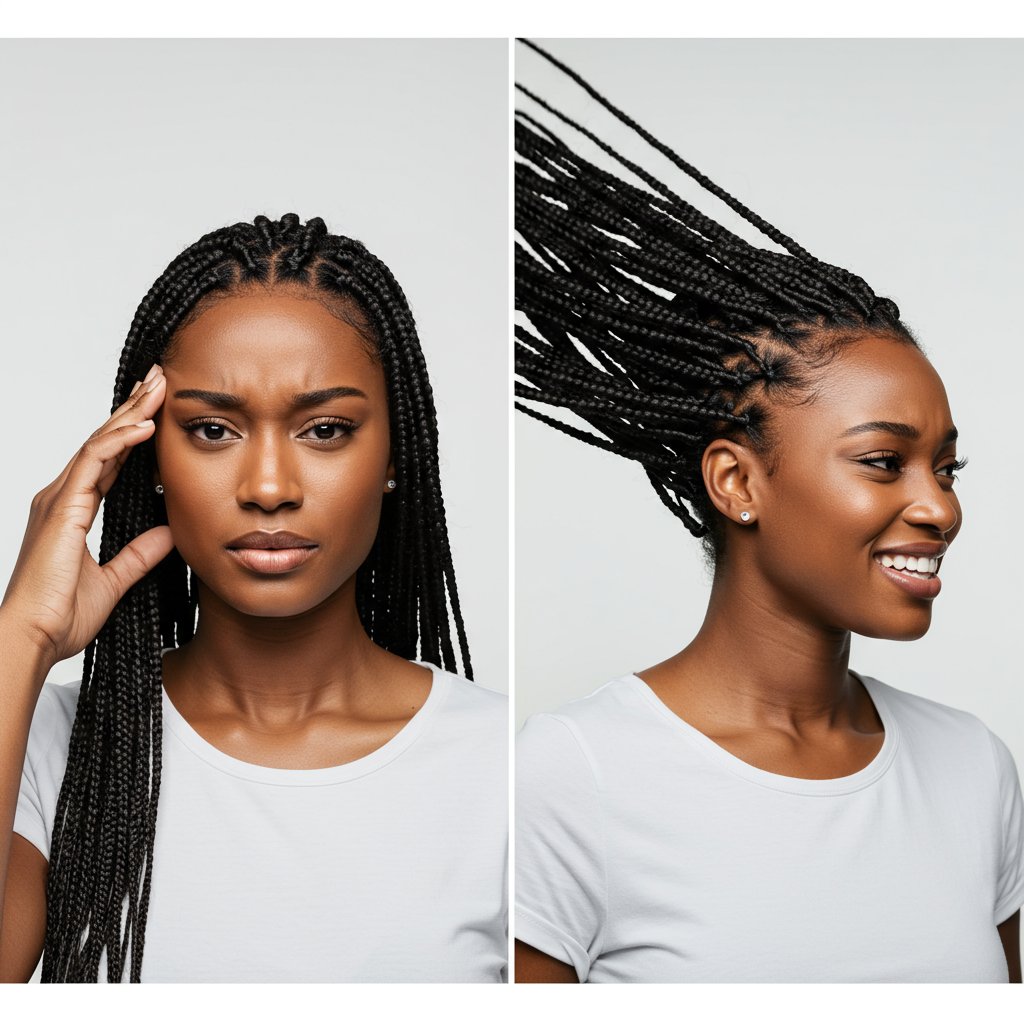
- Tension and Comfort: Knotless braids are the undisputed winner here. They are lightweight, pain-free, and cause minimal tension on the scalp and follicles. Traditional box braids are known for their initial tightness and can be uncomfortable for the first few days.
- Scalp and Hair Health: Due to the lack of tension, knotless braids are far superior for long-term scalp health and significantly reduce the risk of traction alopecia. Traditional braids, if installed too tightly or worn for too long, can pose a risk to follicle health.
- Appearance and Versatility: This often comes down to personal preference, but many favor the flat, natural-looking start of knotless braids. They offer immediate styling flexibility. Traditional box braids have a more pronounced, defined look at the root with the characteristic knot, and may require a few days before they can be comfortably styled in updos.
- Installation Time and Cost: Traditional box braids are generally quicker to install and, as a result, are often less expensive. The meticulous feed-in technique of knotless braids requires more time and skill, leading to a higher service cost.
- Longevity: With proper care, both styles can last for a similar amount of time, typically between 4 to 7 weeks. The longevity depends more on your hair growth rate and maintenance routine than on the braiding technique itself.
Essential Care Tips for Long-Lasting Knotless Braids
To maximize the life of your knotless braids and keep your hair healthy underneath, a consistent maintenance routine is essential. Proper care will keep your style looking fresh and prevent buildup and frizz.
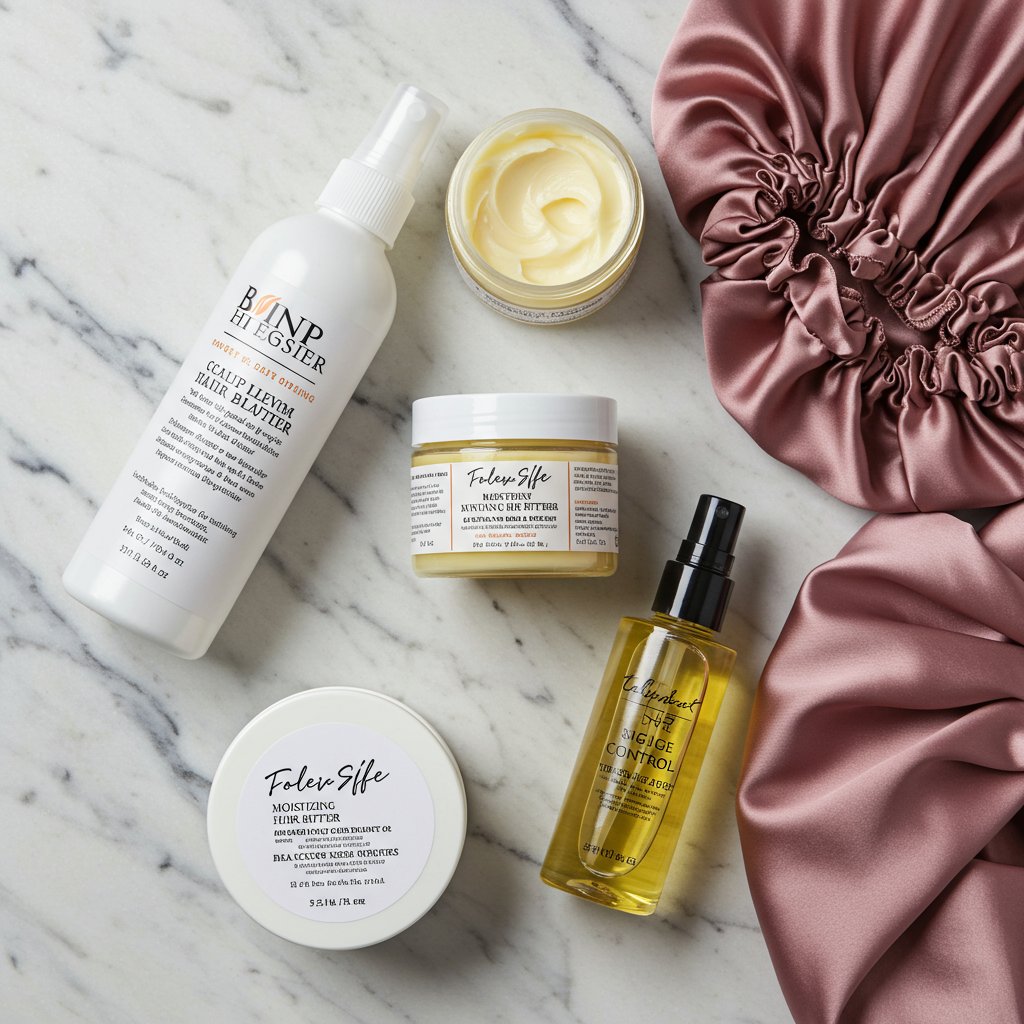
Scalp Cleansing and Moisturizing
A clean scalp is a healthy scalp. Use a diluted, sulfate-free shampoo or a specialized braid cleanser with a nozzle tip to apply it directly to your scalp. Gently massage with the pads of your fingers (not your nails) to lift dirt and buildup, then rinse thoroughly. Follow up by applying a lightweight, moisturizing oil or leave-in spray to your scalp and the length of your braids to prevent dryness and itching. Focus on products with natural ingredients like jojoba oil, tea tree oil, or peppermint oil.
Protecting Your Braids at Night
Friction from cotton pillowcases can cause frizz and dryness. To protect your investment, always sleep with your braids covered. Gather your braids into a loose bun or ponytail and cover them with a silk or satin bonnet or scarf. Alternatively, sleeping on a satin pillowcase can also help reduce friction and keep your braids looking smooth.
Refreshing Your Style
To keep your braids looking neat between washes, you can use a light styling mousse. Apply a small amount to the braids and smooth it down with your hands to tame any flyaways. You can also refresh your edges with a non-flaking edge control for a polished look. Do this every few days or as needed to maintain a fresh appearance.
Knowing When to Take Them Down
Even with excellent care, protective styles have an expiration date. It's generally recommended to keep knotless braids in for no longer than 6-8 weeks. Leaving them in for too long can lead to matting at the root, product buildup, and unnecessary stress on your new growth. Listen to your hair and scalp, and when it's time, have them removed gently, preferably by a professional to minimize breakage.
Frequently Asked Questions About Knotless Braids
1. Are knotless braids truly painless?
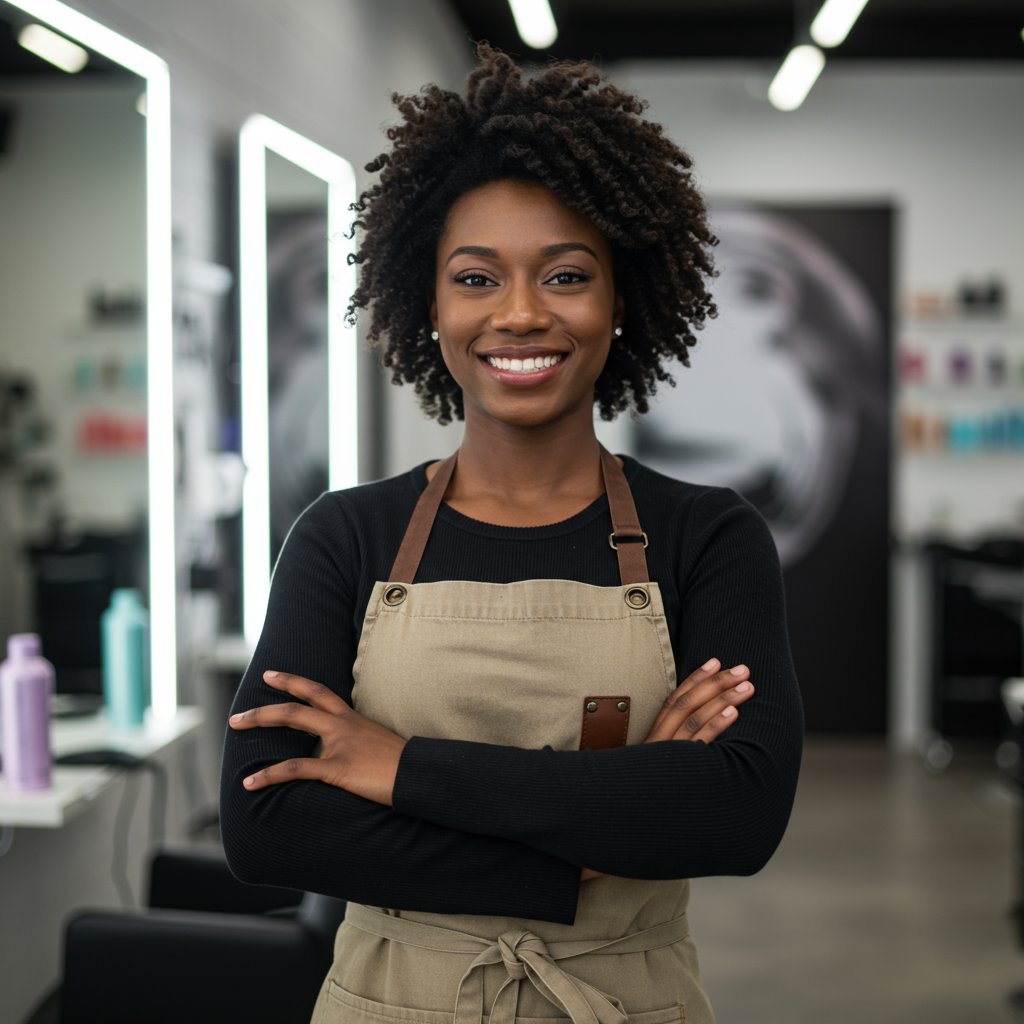
For the vast majority of people, yes. Because the technique eliminates the tension-causing knot at the base, the installation and wear are significantly more comfortable than traditional braids. You should not experience headaches or sharp pulling sensations. If you do feel pain, communicate with your stylist immediately, as the braids may be sectioned too tightly.
2. How long do knotless braids last?
With proper care and maintenance, knotless braids can last between 4 to 7 weeks. The exact duration depends on your hair's growth rate, texture, and how well you follow a maintenance routine. It's not advisable to exceed 8 weeks to prevent matting and protect the health of your natural hair.
3. Can I get knotless braids with fine or thin hair?
Absolutely. In fact, knotless braids are often recommended for those with fine or lower-density hair because they are much gentler on the follicles. A skilled stylist can adjust the size of the sections and the amount of extension hair used to ensure the style is not too heavy for your natural hair to support.
4. What kind of hair should I use for knotless braids?
Pre-stretched synthetic braiding hair, typically Kanekalon or a similar high-quality fiber, is the best choice. This hair is already feathered at the ends, which helps create a more natural, non-blunt finish and makes the braiding process smoother for the stylist. Many brands offer hypoallergenic options for those with sensitive skin.
5. How much do knotless braids typically cost?
The cost of knotless braids varies widely based on your location, the stylist's experience level, and the desired length and size of the braids. On average, you can expect to pay more than you would for traditional box braids, typically ranging from $175 to $400+. The higher price reflects the increased time and skill required for the installation.
The Verdict: A Style That Cares for Your Hair
Knotless braids have firmly established themselves as more than just a passing trend. They are a testament to the innovation within the hair care industry, offering a solution that beautifully marries style with scalp health. By eliminating the primary source of tension, this technique provides a comfortable, lightweight, and versatile protective styling option that minimizes the risk of damage and promotes a healthy environment for hair growth.
Whether you're a long-time braid enthusiast or considering a protective style for the first time, knotless braids offer a compelling list of benefits that are hard to ignore. They provide the stunning look of classic braids with a modern, scalp-friendly twist. For a style that looks good, feels great, and supports the long-term health of your hair, consulting with an experienced stylist about knotless braids is a beautiful step in the right direction.

